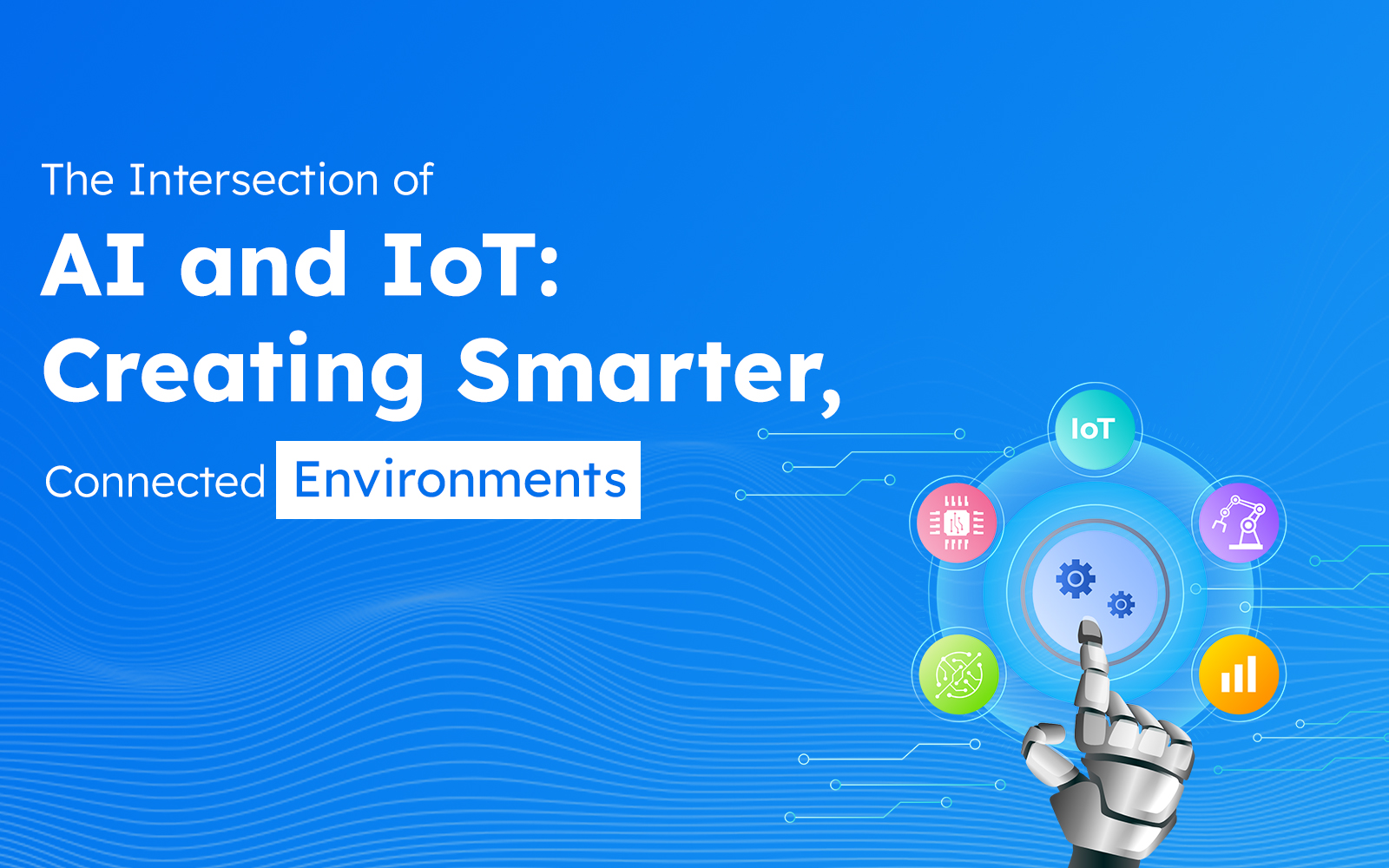The Intersection of AI and IoT: Creating Smarter, Connected Environments
Introduction
The convergence of Artificial Intelligence (AI) and the Internet of Things (IoT) marks a significant milestone in technological evolution. This integration is leading to the creation of smarter, more connected environments, revolutionizing how we interact with the world around us. This blog post delves into how AI and IoT are blending to form intelligent IoT systems, transforming everything from homes to cities.
AI and IoT Integration: A New Era of Smart Connected Environments
The AI and IoT integration is at the forefront of creating smart connected environments. IoT provides a network of physical devices – from home appliances to industrial equipment – capable of collecting and exchanging data. When AI is applied to this wealth of data, it enables these devices to act intelligently and autonomously, making informed decisions without human intervention.
Artificial Intelligence in IoT: Enhancing Device Capabilities
Artificial intelligence in IoT is not just about making devices smarter; it’s about enhancing their capabilities to understand, learn, and interact with their surroundings. AI-driven IoT devices can analyze data in real-time, providing insights and automating tasks to improve efficiency and user experience. This synergy is evident in smart home systems where AI algorithms learn user preferences and adjust settings accordingly.
Convergence of AI and IoT: Building Intelligent IoT Systems
The convergence of AI and IoT is leading to the development of increasingly sophisticated and intelligent IoT systems. These systems can monitor, predict, and respond to changes in their environment, leading to more efficient resource management and improved safety measures. In industrial settings, this convergence has led to predictive maintenance of machinery, saving costs and time.
IoT AI Technologies: Powering Smart IoT Solutions
Emerging IoT AI technologies are at the core of smart IoT solutions. These technologies include advanced sensors, machine learning algorithms, and edge computing. They enable the processing of vast amounts of data at the device level, reducing latency and improving responsiveness in applications like autonomous vehicles and real-time health monitoring systems.
AI-Driven IoT Devices and Interconnected AI Systems
AI-driven IoT devices are becoming increasingly interconnected, forming complex AI systems that can communicate and learn from each other. This interconnectedness is pivotal in sectors like transportation, where AI systems in vehicles interact with smart city infrastructure to optimize traffic flow and enhance safety.
IoT and AI Innovation: Pioneering Smart Environments Technology
The innovation at the intersection of IoT and AI is giving rise to new smart environments technology. This includes advancements in smart grids for energy, intelligent monitoring systems in agriculture, and AI-powered surveillance for enhanced security. These technologies are not only making environments smarter but also more sustainable and resilient.
Future of AI and IoT: Visioning AI IoT Ecosystems
Looking forward, the future of AI and IoT lies in the development of comprehensive AI IoT ecosystems. These ecosystems will be characterized by seamless integration of various AI and IoT elements, leading to environments that are not only smart and connected but also adaptive and self-sustaining.
AI Enhancing IoT: Transforming Connected AI Networks
AI’s role in enhancing IoT extends to the transformation of connected AI networks. These networks are becoming more efficient and capable of handling complex tasks, from managing city-wide utilities to orchestrating supply chains, marking a significant leap in intelligent systems development.
Smart Technology Integration: Realizing IoT AI Synergy
The realization of IoT AI synergy is most evident in smart technology integration. This involves integrating AI and IoT into everyday devices and systems, making them more intuitive and efficient. From smart refrigerators that can order groceries to AI-enhanced manufacturing lines, the possibilities are endless.
Conclusion
In conclusion, the intersection of AI and IoT is creating a paradigm shift in how we perceive and interact with technology. This combination is not just about creating smart devices or systems; it’s about forging an interconnected world where technology works seamlessly to improve quality of life, efficiency, and sustainability. As we continue to explore the vast potential of AI-powered IoT solutions, we stand on the brink of a new era where smart, connected environments become the norm rather than the exception..
Recent Posts
Deep Learning Explained: Understanding the Brain Behind AI
The Intersection of AI and IoT: Creating Smarter, Connected Environments
The Evolution of AI: From Simple Algorithms to Neural Networks
The Role of AI in Sustainable Development
Scaling New Heights: Integrating Advanced Technologies in Startup Product Engineering
